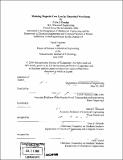| dc.contributor.advisor | Joel P. Harbour and David J. Perreault. | en_US |
| dc.contributor.author | Dunlop, Colin J. (Colin James) | en_US |
| dc.contributor.other | Massachusetts Institute of Technology. Dept. of Electrical Engineering and Computer Science. | en_US |
| dc.date.accessioned | 2009-03-16T19:52:59Z | |
| dc.date.available | 2009-03-16T19:52:59Z | |
| dc.date.copyright | 2008 | en_US |
| dc.date.issued | 2008 | en_US |
| dc.identifier.uri | http://hdl.handle.net/1721.1/44863 | |
| dc.description | Thesis (Nav. E.)--Massachusetts Institute of Technology, Dept. of Mechanical Engineering; and, (S.M.)--Massachusetts Institute of Technology, Dept. of Electrical Engineering and Computer Science, 2008. | en_US |
| dc.description | Includes bibliographical references (leaves 90-91). | en_US |
| dc.description.abstract | Among the challenging unsolved technical problems that have plagued the minds of scientist and engineers throughout the 20th and 21st century is the development of a quantifiable model to accurately estimate or explain Core Power Losses (CPL). Theoretical advances in magnets led to many model proposals, but as these models where experimentally examined, they quickly lost their validation. Many of the current models use manufacturer's material estimates to form limited curve fitted equations. These equations are only valid for a specific waveform over a specified range. Unless the designers use the same conditions used to determine the manufacturer's fitted equations, the models quickly lose their precision. The scope of this thesis is to explain and compare several of the current models and evaluate them using experiment data. The validity of some of the term component used in many of these models will also be investigated. | en_US |
| dc.description.statementofresponsibility | by Colin J. Dunlop. | en_US |
| dc.format.extent | 109 leaves | en_US |
| dc.language.iso | eng | en_US |
| dc.publisher | Massachusetts Institute of Technology | en_US |
| dc.rights | M.I.T. theses are protected by
copyright. They may be viewed from this source for any purpose, but
reproduction or distribution in any format is prohibited without written
permission. See provided URL for inquiries about permission. | en_US |
| dc.rights.uri | http://dspace.mit.edu/handle/1721.1/7582 | en_US |
| dc.subject | Mechanical Engineering. | en_US |
| dc.subject | Electrical Engineering and Computer Science. | en_US |
| dc.title | Modeling magnetic core loss for sinusoidal waveforms | en_US |
| dc.type | Thesis | en_US |
| dc.description.degree | S.M. | en_US |
| dc.description.degree | Nav.E. | en_US |
| dc.contributor.department | Massachusetts Institute of Technology. Department of Electrical Engineering and Computer Science | |
| dc.contributor.department | Massachusetts Institute of Technology. Department of Mechanical Engineering | |
| dc.identifier.oclc | 301814125 | en_US |
